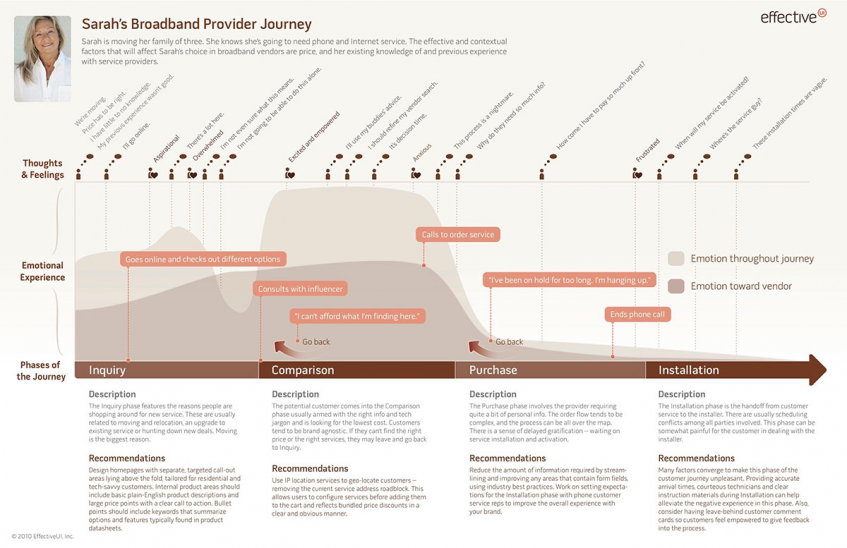
How to Create a Strong Brand for Your eCommerce Business
Editor’s note: This is a guest post by Raj Jana, Founder, JavaPresse.
The rapid growth of the eCommerce industry is both a gift and a curse. On the one hand, more and more people shopping online means there’s more money to be made. But on the other hand, it means a more competitive marketplace.
To stay relevant, you need a strong brand. Good brands draw people towards them, and they provide people with a reason for choosing one product over another. People also trust strong brands, and they are more willing to take their advice, which should hopefully result in more sales.
Yet creating a strong brand is no simple task. Nike, Coca-Cola and Apple have spent years and millions to build their brands. You don’t need to do this, but if you learn from what they did, you should be able to create a strong brand for your business.
Here are a few tips for helping you create a strong brand for your eCommerce business:
Know Yourself
For your branding to be successful, it needs to be authentic. If you say one thing and then do another, this will erode people’s trust, and it will make your branding far less effective. So the first thing you need to do is to discover the parts of your company you consider to be essential.
Defining your mission statement, vision and core values will help you do this. Here’s how:
Vision
Your company exists to solve a problem or to satisfy a need. So to figure out your vision, ask yourself: What problem am I solving?
Your vision is the imagined state where you’ve solved this problem for every person who suffers from it.
Let’s consider an example:
Facebook is one of the world’s largest companies. It makes billions of dollars a year and has tremendous power. But this is not its vision. Instead, Facebook is working to build a world that’s more connected.
This might seem simple, but it’s very powerful. And it’s important to note that your vision may not always come true. Think of it as an ideal state that you strive towards. You may never get there, but the journey is what defines you.
Your vision is important to determining branding because it will help establish purpose. To build brand affinity, you need to demonstrate to people what purpose you serve. What are they accomplishing by choosing you? If you can prove to them their doing something they care about, then you’ve got a serious chance of winning that person over as a loyal customer.
Mission Statement
Your mission statement builds off your vision in that it’s your tangible plan for how you’re going to make your vision a reality. It’s all well and good that Facebook wants to build a more connected world, but how exactly are they going to do that? Well, Facebook’s Mission Statement suggests they plan to do it by using technology to empower people to build stronger connections.
Your mission statement helps you create a strong brand because it assigns meaning to the money people spend with you. It’s helping you carry out your mission and turn your vision into reality.
Core Values
Values are the underpinnings of your culture. And you’re culture will be critical in your quest to build brand authenticity.
Outline what type of company you want to be. What do you consider to be most important? In branding, your values will help show to people you have what it takes to make your vision a reality.
And this will help determine messaging. When you begin communicating with your target audience, you need to make sure every message is supporting one of your values. This way, people will make the right associations with your brand and begin to believe it and trust it. Check out this video from Airbnb CEO Brian Chesky about how to form core values right from the beginning.
Know Your Audience
Once you have a better idea of your brand’s identity and personality, you need to find out what it is your audience is looking for and how they currently perceive your brand.
Learning about current perceptions is tough. Surveying customers is great for this, and you can also leverage customer service to determine what people think about you.
But Customer Journey maps and an Ideal Customer exercises will also help you gain valuable insight about your customers.
The Customer Journey map outlines the path customers take from being interested in the products you sell to actually making a purchase. What do they look for? How do they get their information? What do they expect from a company such as yourself? Take a look at this customer journey map from UI Effective to get an idea as to how these work:


Image source
After the Customer Journey map, do an ideal customer experience. To do this, follow these steps:
- Create a fictitious customer, giving them a name, an occupation and a personality. Try to be as descriptive as possible.
- Think about how they spend their day, and write out the different activities they do on a timeline.
- Next to each activity, identify what’s going on with them. Is this a positive experience? Negative? And what’s making it that way? The goal here is to identify pain points.
- Determine where you will be able to reach people at each point. Is social media best? Email? The radio? At each touchpoint, there will be a different channel. You need to find out which one is the most effective.
The goal of all this is to find common ground with your customers. Building brand affinity will depend on your ability to prove to people you’re the type of company they want to do business with. Taking time to define your brand personality and to align it with customer expectations and perceptions will help make your brand much stronger.
Be Consistent
Lastly, the key to a strong brand is consistency. For your brand to be successful, people need to come away with the right impression of it every time they come into contact with your brand. Messaging and design need to be the same across all platforms.
One good way to make sure you’re consistent is to establish brand guidelines. These are clearly defined components of what your brand is or isn’t, and they help ensure consistent messaging.
These guidelines will include instructions for things such as colors, images and fonts, but they will also outline the types of content you are looking for. If you’re a fun-loving brand that’s trying to help people better enjoy themselves in their free-time, make sure your content is easy-to-read, helpful, relevant and fun. If it’s not, it’ll send the wrong message and make it harder for you to demonstrate authenticity.
Do Your Research and Be Patient
Building a strong brand will not come overnight. You need to start by learning as much as you can about yourself and your audience. And then once you start, be persistent and patient, but also be adaptable. Monitor progress and make changes wherever necessary. If you do this, and keep in mind what we’ve discussed today, you’ll be well on your way to creating a strong brand for your eCommerce store.
Learn how Payoneer helps you sell anywhere in the world!






